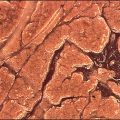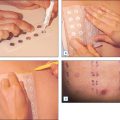Chapter 25 Oily Skin
Oily skin is a challenge for the dermatologist since there is a fine balance between removing enough sebum to get rid of facial shine while not inducing temporary skin dehydration. Many patients with oily skin are tempted to use strong detergent cleansers to remove sebum; however, the intercellular lipids are also damaged, yielding the appearance of dry skin. It is not possible for a cleanser to separate between sebum and intercellular lipids, thus a cleanser should be selected that minimizes barrier damage. Barrier damage is a problem created by many acne medications that contain skin irritants such as benzoyl peroxide or retinoids. Table 25.1 lists some of the cosmeceutical ingredients that might be helpful in products designed for oily skin.
Table 25.1 Cosmeceutical actives for oily skin
| Cosmeceutical | Effects on skin physiology | Patient selection comments |
| Niacinamide | Reduces amount of sebum collected on skin surface | Used topically in oil-reducing moisturizers |
| Polymer-absorbing beads | Bead uses van der Waals forces to absorb and hold oil in polymer sphere | Used in moisturizer to hold and absorb oil that reaches the skin surface |
| Salicylic acid | Oil-soluble exfoliant that can enter sebum-rich pore milieu | Used as an astringent to remove oily residue from skin surface and follicular ostia |
| Witch hazel | Astringent containing tannins from leaves obtained by steam distillation | Used to remove excess sebum from face in a tonic as an astringent |
| Papaya | Papain proteolytic enzyme removed from fruit and applied to skin surface | Enzyme removes oil and desquamating corneocytes from skin surface |
| Soy | Fresh soy milk fraction contains phytoestrogen genistein | Thought to be an antiandrogen hormonally reducing oil production |
| Retinol | Naturally occurring form of vitamin A functioning as a retinoid | Thought to produce a drying effect on skin similar to prescription retinoids on a lesser level |
These cosmeceuticals should be used in a stepwise fashion to obtain the best oil control results for a given patient, since each works on a different mechanism. Box 25.1 is a flowchart detailing how to use these substances in products combined to yield optimal results. This basic flowchart can be used to customize cosmeceutical treatment for patients depending on their degree of sebum production and gender.
Box 25.1 Flowchart for oil control
STEP 2: TONER APPLICATION
Witch hazel astringent over oily T-zone (entire forehead, between eyebrows, and nose).
STEP 3: COSMECEUTICAL MOISTURIZER APPLICATION
Niacinamide and/or retinoid (retinol, retinyl propionate) moisturizer.





